Planting Onions - A How-To Guide
When it comes to planting onions, you have three choices - you can start with seeds, seedlings or sets. There are advantages and disadvantages that go along with each method.
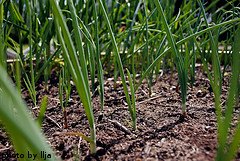
If you start with seeds, you'll probably have more variety to choose from. Onion seeds are also much cheaper than seedlings. However, unless you live in a very warm climate, you have to start the seeds indoors early, about 9 weeks before the last expected heavy frost in your area. If you live in a very warm climate with very mild winter months, you can plant onions in the fall. If this is your situation, start the onion seeds sometime in late summer. Another disadvantage to starting onions from seed is you have to get topsoil or potting soil and find a place indoors that gets plenty of sunlight. Some gardeners just don't have the space indoors to start onions from seed. Others just don't want to invest the time or effort. If this sounds like you, you can start planting onions with seedlings or sets.
Onion seedlings, also known as starts, are a little bit more expensive than seeds, but can be planted directly in the garden. Most onion seedlings come in bundles. They are basically a group of onion plants about the thickness of a pencil. These plants can easily be planted in your garden very quickly and will produce onions in 60-80 days. Most garden centers only sell a couple of different varieties of onion seedlings, so your choices are limited.
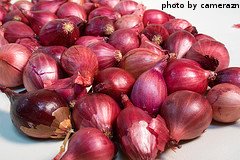
Onion sets are more commonly available in most garden centers. They are basically a bunch of small onion bulbs, about the size of a large garlic clove. Onion sets are sold in bags or containers. Each bulb will produce a full sized onion if allowed to mature fully. Sets will also produce green onions as well. They are slightly more expensive than onion seeds, but are easy to plant and usually produce good results.
Planting Onions From Seed
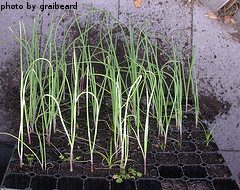
Start by purchasing onion seeds, topsoil or potting soil and flats. Flats are plastic trays that are divided into small sections. Each section can be filled with dirt and becomes it's own small container. Choose onion seeds that are suited to your particular climate. Fill the flats with good quality top soil or potting soil, leaving 1/4 inch at the top. Put a seed on top of the soil in each compartment. Add soil on top of the seed until each compartment is full. Place the flats in a location where they get 6-8 hours of sunlight daily. Keep the soil moist by lightly watering the flats every few days. When the seedlings reach 4 inches tall, they are ready to be transplanted into the garden or a larger container. To remove the seedlings from the containers, tug gently on the them near the base of the soil. The entire plant should come out in one piece. The part that was buried should be about the diameter of a pencil.
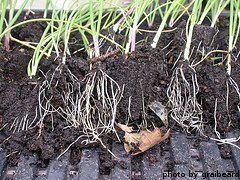
Once you have your seedlings, either homegrown or purchased, it's time to put them in your garden. Onions are usually grown in rows. Choose a location that gets 6-8 hours of direct sunlight. Start by making sure that the soil is tilled to a depth of at least 8 inches. Now is also the time to fertilize your onion patch.
Click here to learn about fertilizing onions
To plant the seedlings, poke holes in the ground with your finger or the end of a hoe. The holes should be about 1 1/2 inches deep. If the onions you are planting are large, space the holes 6-8 inches apart. If you are growing a smaller variety, space the holes 4-6 inches apart. If planting more than one row of onions, space the rows at least a foot apart. Place the onion seedlings into the holes so that the stems and roots are beneath the soil surface. Make sure that the green tops are above the soil surface. Backfill any remaining space with loose soil and tamp down lightly. Once you have finished planting onions, water the seedlings in well.
If you are planting onion sets, the process is similar to planting garlic. After tilling, use your finger or the handle of a hoe to poke holes in the dirt. The holes should be about 1 1/2 inches deep. Space the holes about 6 inches apart. If planting multiple rows, space the rows at least 12 inches apart. Place the onion set into the hole with the neck end pointing up and the roots pointed down. Cover with loose soil, making sure that the top of the stem is just barely below the surface of the soil. After planting onion sets, water them in thoroughly.
Follow the same directions for planting onion seedlings or sets in containers. Make sure to choose a container that has good drainage holes and is at least 10 inches deep. Fill the pot with good quality potting soil or top soil. Depending on the diameter of the container and the variety of onion you want to grow, you can fit several onion seedlings into a single container. Be sure to place the container in a location that will get 6-8 hours of daily direct sunlight.
Now that you have finished planting onions, it's time to think about watering your crop.
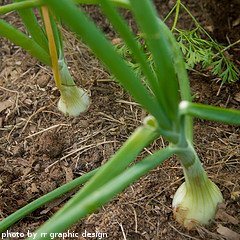
Click here for information about watering onions
Click here to learn about harvesting onions
Click here for some of our favorite onion recipes
Click here to move from our Planting Onions page to our Growing Onions main page
Click here to go to our Home page